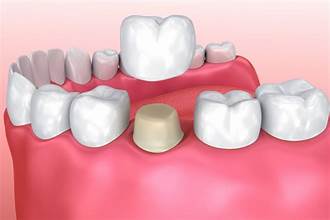HEALTH
Advanced Cancer Treatment in Germany

Compared to other diseases, cancer is the second and, in some countries, the first cause of death. It is a group of deadly diseases that in the twentieth century were considered incurable. However, today more than half of cancer cases in developed countries are cured, and in the remaining patients in whom the tumor is not detected in time, cancer can be controlled for many years with the help of medications. If you undergo cancer treatment in Germany, you can count on excellent results due to the use of innovative cancer treatments.
Innovative cancer surgery
Cancer treatment abroad is becoming less and less traumatic and more and more effective.
Minimally invasive surgeries are increasingly being used as an alternative to traditional cavity surgery. In the early stages of cancer, endoscopic interventions through natural openings are used. In stages I-II, doctors can remove the tumor through short incisions: using laparoscopy or thoracoscopy. These types of surgery are already mainstream for prostate, colon, and kidney cancers, and may also be used in some patients with lung, adrenal, stomach, and pancreatic cancers.
Robotic surgeries are replacing laparoscopic ones in the best cancer clinics. The principle is the same: surgery through short incisions, but the technique used is different. The operation is performed with the hands of a robotic surgeon, which the doctor controls remotely. These interventions are safer and also provide additional options that allow for a more complete removal of the tumor, thereby reducing the risk of recurrence. For example, doctors can access the most hard-to-reach areas of the abdomen through greater manipulation of the instruments or use a gamma probe to locate metastasis-affected lymph nodes.
Intraoperative therapeutic procedures can improve the effectiveness of surgery. For example, intraoperative irradiation, sentinel lymph node biopsy, and hyperthermic intraperitoneal chemotherapy (lavage of the abdominal cavity with a heated solution of chemopreparations) are used during surgical cancer care in Germany.
Innovative cancer radiotherapy
The top oncology hospitals use the latest methods of radiation therapy for cancer with advanced equipment, ensuring precise radiation delivery with minimal tissue damage: IMRT, SBRT, IGRT, and others.
In Germany, proton therapy is performed in six clinics. This is the safest method of irradiation, which is used in pediatric oncology, as well as in adults for irradiation of tumors of the head and neck, skull base, eye, and spine.
Advanced cancer therapies
Germany has innovative cancer techniques that allow impressive success even for the most aggressive neoplasms, including those in advanced stages.
Immunotherapy. It has been attributed to upcoming medical breakthroughs in oncology, but immunotherapeutic techniques have already become part of the standard treatment for most cancers. In Germany, specialized clinics are using dendritic cell vaccines, a personalized treatment that boosts the anti-tumor immune response.
CAR Т-cell therapy. It is a type of immuno- and gene therapy in which a receptor is added to immune cells. It helps white blood cells attach to cancer cells and destroy them. It is most commonly used for lymphoma and leukemia.
Radiotargeted therapy. It is used for prostate cancer and late-stage neuroendocrine tumors. A radiopharmaceutical is injected into the body and selectively accumulates in tumor tissue by interacting with a specific molecular target, such as prostate-specific membrane antigen (PSMA). As a result, the tumor is destroyed by radiation, healthy tissue is virtually unaffected, and the radionuclide is eliminated from the body after a few days.
Chemoembolization and radioembolization. This is an endovascular procedure that is performed through an incision in the leg or arm, from inside the blood vessels. Doctors use tiny balloons filled with chemo drugs or radioactive substances to block the blood vessels feeding the tumor. This procedure used to be performed only for liver tumors, but now it is also successfully used to destroy tumors of other locations: lung cancer, cervical cancer, breast cancer, thyroid cancer, etc.
You can take advantage of all these and many other innovative methods of cancer treatment in Germany. Choose a clinic, check prices, and make an appointment for convenient dates through the Booking Health service. The cost of medical services for you will be lower than if you apply to the clinic directly, due to the absence of additional fees for foreign patients.
HEALTH
Nurse Well-being – 6 Tips for Nurses to Manage Stress

Nursing is inherently a high-stress profession, where the demands of patient care, long hours, and the emotional weight of the job can take a significant toll on a nurse’s well-being. The fast-paced and sometimes unpredictable nature of healthcare settings can exacerbate stress levels, impacting not only the health of the nurses themselves but also the quality of care they provide to patients. It is crucial, therefore, for nurses to adopt effective stress management strategies to safeguard their mental, emotional, and physical health.
This guide offers practical tips for nurses to manage stress, promoting a balanced and healthy approach to their challenging yet vital roles in healthcare.
1. Mindfulness and Meditation
Mindfulness and meditation have gained recognition for their ability to reduce stress and improve mental clarity. For nurses who often work in environments where focus and calm are essential, these practices can be particularly beneficial. Mindfulness involves being fully present and engaged in the moment, which can help nurses manage the emotional and physical demands of their work. By adopting mindfulness practices, nurses can enhance their ability to respond to work challenges with greater composure and efficiency.
Starting a meditation practice can be as simple as dedicating a few minutes each day to focus on one’s breath or engage in guided meditation sessions. Many resources, including apps and online courses, are available to help beginners learn the basics of meditation.
2. Pursuing Further Education with Flexibility
For nurses aspiring to expand their roles, particularly those interested in becoming nurse educators, pursuing further education is a valuable path. However, balancing work, studies, and personal life can be a significant source of stress. Engaging in online nurse educator programs presents a flexible solution, allowing nurses to advance their education and career prospects without compromising their work commitments or well-being. These programs are designed to fit the unique schedules of nursing professionals, providing an opportunity for growth and development that aligns with their demanding lifestyles.
The benefits of online education extend beyond flexibility; they also include exposure to a diverse range of perspectives, access to cutting-edge knowledge in the field, and the ability to apply new learnings directly to clinical practice. For nurses, this continuous professional development can be a source of personal fulfillment and motivation, countering feelings of burnout and stagnation. By choosing online programs, nurses can pursue their ambitions to become educators, shaping the next generation of nursing professionals while managing stress and maintaining balance in their lives.
3. Regular Physical Activity
Physical activity is a potent stress reliever for individuals in all professions, particularly in nursing, where the physical and emotional demands can be intense. Regular exercise releases endorphins, the body’s natural painkillers and mood elevators, which can improve mood, enhance energy levels, and reduce feelings of stress. For nurses, finding an activity they enjoy and can consistently participate in—be it yoga, running, or even brisk walking—can make a significant difference in their overall stress levels and well-being.
Incorporating exercise into a busy nursing schedule may seem challenging, but even short, focused bouts of physical activity can be beneficial. Nurses can consider integrating exercise into their daily routine in simple ways, such as taking the stairs instead of the elevator, engaging in short stretching sessions during breaks, or participating in team sports or fitness classes with colleagues, which can also offer social support. Establishing a routine that includes physical activity can provide nurses with a valuable outlet for stress relief and a method for maintaining their health and stamina.
4. Adequate Rest and Sleep
The significance of sufficient rest and sleep cannot be overstated for nurses, who often work long and irregular hours. Quality sleep is essential for physical health, emotional well-being, and cognitive function, all critical components for effective nursing. Lack of sleep can exacerbate stress, impair decision-making, and reduce the ability to cope with the demanding nature of nursing work. Nurses should prioritize establishing a regular sleep schedule, ensuring they get the recommended 7-9 hours of uninterrupted sleep per night to function optimally.
Creating a conducive sleep environment is also vital. Nurses can improve their sleep quality by ensuring their bedroom is quiet, dark, and at a comfortable temperature. Engaging in relaxing activities before bed, such as reading or taking a warm bath, can help signal to the body that it’s time to wind down. Additionally, limiting exposure to screens before bedtime can enhance sleep quality by reducing the impact of blue light on sleep-inducing hormones. By prioritizing sleep, nurses can better manage stress and maintain their health and well-being.
5. Establishing a Support Network
Having a strong support network is invaluable for managing stress in nursing. This network can include colleagues who understand the unique challenges of the profession – friends and family who provide emotional support, and professional groups or forums where nurses can share experiences and advice. Such networks offer an outlet for discussing challenges, celebrating successes, and seeking guidance, reducing feelings of isolation and overwhelm.
Building this support network can involve participating in nursing associations, attending professional events, or simply maintaining open lines of communication with peers and loved ones. Encouraging a culture of support within the workplace can also foster a sense of community and collective resilience among nursing staff. When nurses feel supported, they are better equipped to manage stress and navigate the complexities of their work with confidence and composure.
6. Professional Counseling and Mental Health Resources
Recognizing when to seek professional help is a critical aspect of managing stress effectively. Nurses should be aware of the signs of excessive stress, such as persistent feelings of anxiety, irritability, or burnout, and know that seeking help is a sign of strength, not weakness. Many healthcare institutions offer counseling services or stress management programs designed to support healthcare professionals. Additionally, numerous online resources and mental health apps are tailored to the needs of those in high-stress occupations like nursing.
Engaging with these resources can provide nurses with strategies to manage stress, cope with the emotional demands of their work, and maintain their mental health. Professional counselors can offer personalized guidance and support, helping nurses develop effective coping mechanisms and resilience. By taking advantage of these resources, nurses can ensure they are not only caring for their patients but also themselves, sustaining their capacity to provide compassionate and high-quality care.
Conclusion
Nurse well-being is paramount in the high-stress, high-stakes field of healthcare. By adopting strategies such as pursuing further education with flexibility, maintaining regular physical activity, practicing mindfulness and meditation, ensuring adequate rest and sleep, establishing a support network, and utilizing professional counseling and mental health resources, nurses can effectively manage stress and maintain their health and well-being.
HEALTH
How Long Do Dental Crowns Last on Teeth?

Regular check-ups and dental hygiene is the most important life-hacker for your teeth. Nevertheless, although thoroughness is always adhered to, some dental problems are occurring that should be looked at and intervened. Among other treatments, the placement of crowns may be applied, instead. But how long do dental crowns last on teeth?
Having dental crowns has improved life duration in a real sense as well as impacted by several factors like mouth structure and sadly some tips can restore the duration and lifespan of dental crowns.
What Are Dental Crowns?
Dental crowns, or as they may be known popularly, “caps,” are dental prostheses used to cover a tooth that is structurally damaged for aesthetic or reinforcing purposes. They are of that specific colour that matches the natural shade of your teeth, hence appearing as if they were one of them.
A dental crown works the way it does by protecting the covered tooth from the inside, essentially giving it the support it needs from outside its surface and ceasing further damage. It is therefore utilized in scenarios where the filling by itself will not sufficiently rectify the current dental problem. To reinforce the whole visual area of the tooth, this way a crown clings to it tightly and thus enhances the additional stability and safety.
Types of Dental Crowns
Capped intact crowns are designed using different materials, each with its specific benefits and potential downsides. The most common types of dental crowns include:
- Ceramic or Porcelain Crowns: These crowns, too, are highly demanded because they are almost indistinguishable; they are the same colour as your teeth. These structures are the best for those teeth that are visible to others. For instance, they do great in aesthetics and durability but along the path of time, they may chip or crack.
- Metal Crowns: The human bite force ranges from 120 to 200 pounds per square inch (PSI), which puts them at risk of chipping and cracking real teeth. Therefore, metal crowns are made of metals like gold, nickel, palladium, and chromium, which are very durable and wear-resistant. Nevertheless, this silver-like colour will also result in difficult adhesion to the teeth which are located in the front.
- Porcelain-Fused-to-Metal (PFM) Crowns: The high strength, along with the authenticity of the porcelain aesthetics, is what makes PFM crowns the right pick. This type of restoration is an ideal option for both front and back teeth. When it comes to the metal side of the crown, it may peek out slightly over time.
- All-Resin Crowns: Resin crowns are among the cheapest choices, yet they have very little durability in comparison to other materials that might be worn faster than other options. The biggest risk for active prosthetics is the more prone to fracture and the replacement will be more frequently required than passive prosthetics.
- Pressed Ceramic Crowns: Ceramic crowns that are pressed maintain an equilibrium in that factor between strength and looks. They bring with them ceramic outer shells and strong inner nuclei which give them great durability and very much a natural-looking appearance.
A dentist will examine your specific situation individually and recommend the most appropriate type of crown matching taking into account the place of the tooth, your wishes regarding aesthetics, and the size of your budget.
How Long Do Dental Crowns Last on Teeth?
When deciding whether one should undergo the procedure of getting a dental crown, one has to take into consideration that the lifespan of the crown will depend on some factors including the material used, one’s dental hygiene, the diet, as well as the overall wearing out of the teeth. The longevity of dental crowns is not expected to last for one’s lifetime. With correct maintenance practice, the dental crowns would serve their purpose for 15-30 years.
According to this dentist who does Invisalign in Shrewsbury, taking care of a dental crown involves maintaining good oral hygiene and being mindful of your eating habits. Brush your teeth at least twice a day and floss daily to prevent plaque buildup around the crown. Use a fluoride toothpaste and a soft-bristled toothbrush to clean gently. Avoid biting down on hard foods or using your teeth as tools to prevent damage to the crown. Regular dental check-ups are crucial to monitor the condition of the crown and address any potential issues promptly.
To a great extent of their professionalism and skill, gold crowns considered the most durable ones, can be long-term when compared to other types of crowns. On the other hand, they have a lower share in the market for this reason as their appearance is quite different from the other bearings and they have higher costs.
Contrarily, resin crowns might have a better prognosis because they are more prone to wear and fracture. Porcelain or ceramic crowns, including pressed ceramic crowns – the most aesthetic and durable combination of materials available in dentistry. You can get good visual results with them if you use this type of material. They are the most frequently chosen crowns by patients.
Factors Affecting the Lifespan of Dental Crowns
On average a dental crown might last between 15 to 30 years, nevertheless, multiple factors are included in it. Understanding these factors can help you maximize the lifespan of your dental crowns: Understanding these factors can help you maximize the lifespan of your dental crowns:
1. Oral Hygiene Practices
To keep your dental crowns better and longer, monitoring good oral hygiene is essential. Brush your teeth at least in the morning and at night and also don’t forget to floss daily to keep away the plaque, bacteria buildup and the associated tooth decay, and gum disease. It is necessary to clean up the hole near the foundation to prevent possible problems.
2. Diet and Chewing Habits
The duration of a dental crown’s lifespan depends on two factors: your diet and chewing habits. It may be better to stay away from such foods as hard or sticky ones which can lead to disruption in the adhesive joint or can result in the crack of the crown. You should not chew ice, hard candies, or items with similar features as they are capable of perpetrating cracks and fractures in your crown.
3. Teeth Grinding and Clenching
Bruxism or clenching and grinding of teeth can be a perfect cause of shortening permanent dental crowns’ lifespan. The excessive power required for the grinding and pressing can cause the crowns to be abraded bit by bit or loosen up over time. If you have bruxism, you are often likely to grind your teeth at night, this can wear out your crowns. By wearing a night guard, you will prevent this and exclude the risk of damage.
4. Regular Dental Check-ups
Avery important step that you should pay attention to in dental crown maintenance is a regular oral visit that allows identify any possible disease of the crowns as early as possible. As part of your regular checkup, your dentist would check the state of the crowns, be on the lookout for any signs of wear, or crack, and mainly discuss any issues or cases of complications that you may have. Other benefits, such as the prevention of caries and periodontitis, are high in cost-effectiveness and vital for the longevity of dental crowns.
What Happens If a Dental Crown Fails or Falls Out?
Like dental crown restoration, the dental crown can be damaged or even become dislodged hence causing its failure under certain conditions. The main causes for crown failure are debris supplementing beneath the crown and floss entangling around it.
A fallen crown, which is still kept in good condition, can be simply re-cemented by a professional dentist. While it could be the case that the new cement will not be as effective as the old one, the durability could still be quite a bit. Such a situation will force the replacement of the bonding of the crown, if any.
If you have a crown breakage or a crown pulled out, you should contact the dental care professional ASAP which may lead to the teeth breaking down. A prompt action can save the subject or reduce the trouble it can cause.
Conclusion
Dental crowns are a broad tool that can be used for the restoration of teeth that have emerged and are in deep trouble. The lifespan of the dental crown may vary due to several factors. However, certain good mouth hygiene practices, a balanced diet, and regular dental appointments with a dentist can help you to extend the life of the crown for a long period.
If you are planning to get dental crowns, discuss with the dental specialist what type of crowns is suitable for your particular circumstances. Make sure you practice good oral hygiene and do not apply a great force on the crowns, also if you need to work on removing your grinding and clenching habits then you need to do this with visits to the dentists.
Dentakay is the place that you should be considering for affordable and high-quality crowns in Turkey. We are a dental clinic with an expert team of dentists and great facilities. To obtain more knowledge regarding the dental crown Turkey process please visit us or schedule a consultation and receive the benefits that dental implants provide.
HEALTH
Strategies for Well-Being Amidst Motherhood’s Challenges & Burnout

Motherhood, though rewarding, often comes with its own set of challenges, one of the most prevalent being mommy burnout. This phenomenon, characterized by physical and emotional exhaustion, is a common issue among mothers worldwide. In this article, we delve into the signs and consequences of mommy burnout, offering practical coping strategies for prevention and management.
Understanding Mommy Burnout
Mommy burnout is more than just feeling tired; it’s a state of chronic stress and overwhelm that can significantly impact maternal well-being. Signs and symptoms include chronic fatigue, irritability, and a sense of being constantly overwhelmed. Left untreated, mommy burnout can have far-reaching consequences, affecting not only the mother’s health but also family dynamics and relationships.
Chronic fatigue:
Fatigue may manifest as physical exhaustion, mental weariness, or a combination of both, impairing the mother’s ability to perform daily tasks and engage in activities with her family.
Persistent feelings of tiredness despite adequate rest and sleep can indicate a deeper underlying issue of burnout.
Irritability and mood swings:
Mothers experiencing burnout may find themselves easily irritable, snapping at loved ones over minor frustrations or feeling overwhelmed by seemingly trivial matters.
Mood swings, ranging from frustration to sadness or anger, may occur frequently and unpredictably, further contributing to the sense of emotional distress.
Sense of being constantly overwhelmed:
- Mothers may feel as though they are drowning in responsibilities, unable to keep up with the demands of caregiving, household chores, work, and other obligations.
- This overwhelming sense of pressure can lead to feelings of inadequacy, guilt, and self-doubt, perpetuating the cycle of burnout.
Impact on family dynamics and relationships:
- Mommy burnout can strain relationships within the family, leading to conflicts, misunderstandings, and feelings of resentment.
- Children may sense their mother’s stress and react with anxiety or behavioral changes, further exacerbating tension within the household.
- Partners may feel powerless to help or may themselves experience increased stress, contributing to a cycle of familial distress.
Identifying Signs of Mommy Burnout
Recognizing the signs of mommy burnout is crucial for timely intervention. In addition to emotional symptoms, such as feeling detached from loved ones, physical manifestations are also common. Conditions like “Mommy’s Wrist” (De Quervain’s tenosynovitis) and other musculoskeletal issues can arise from the physical demands of motherhood. Check out this Serenity Kids article for more insights on managing mommy’s wrist pain. Mothers are encouraged to prioritize their physical well-being and seek medical attention for symptoms such as wrist pain, back pain, or other discomforts that may indicate burnout.
Coping Strategies for Prevention
Preventing mommy burnout requires proactive self-care practices. Setting boundaries, prioritizing tasks, and seeking support from partners, family members, or friends can help mothers manage stress and prevent burnout. Carving out time for rest, relaxation, and activities that bring joy and fulfillment is essential for maintaining balance amidst the demands of motherhood.
- Setting boundaries:
- Establishing clear boundaries around time, energy, and personal space can help mothers protect their well-being and prevent burnout.
- This may involve saying no to additional commitments or delegating tasks to others when feeling overwhelmed.
- Prioritizing self-care:
- Prioritizing self-care activities such as exercise, hobbies, or mindfulness practices is essential for replenishing energy reserves and reducing stress.
- Making self-care a non-negotiable part of the daily routine can help mothers maintain resilience in the face of life’s challenges.
- Seeking social support:
- Building a strong support network of partners, family members, friends, or fellow mothers provides valuable emotional and practical support during difficult times.
- Connecting with others who understand the challenges of motherhood can offer validation, encouragement, and a sense of camaraderie.
- Practicing time management:
- Implementing effective time management strategies, such as prioritizing tasks, breaking them down into manageable steps, and using tools like calendars or to-do lists, can help mothers feel more in control of their schedules and reduce stress.
- Nurturing relationships:
- Investing time and effort into nurturing relationships with loved ones fosters feelings of connection, belonging, and emotional support.
- Making time for meaningful interactions with partners, children, and friends strengthens bonds and provides a source of joy and fulfillment amidst the busyness of motherhood.
- Embracing imperfection:
- Recognizing that perfection is unattainable and embracing imperfection allows mothers to let go of unrealistic expectations and alleviate self-imposed pressure.
- Accepting that it’s okay to make mistakes, ask for help, and prioritize self-care fosters a mindset of self-compassion and resilience.
Coping Strategies for Management
For mothers already experiencing burnout, regaining balance and restoring well-being is possible with the right strategies. Techniques such as deep breathing exercises, mindfulness meditation, and journaling can help manage stress and promote emotional resilience. Professional resources and support networks, including therapy, support groups, and online communities, offer valuable assistance to mothers seeking help with managing burnout.
Creating a Sustainable Self-Care Routine
Developing a sustainable self-care routine is key to long-term well-being. Guidance on creating a personalized self-care plan that aligns with individual needs, preferences, and lifestyle constraints empowers mothers to prioritize their own health and happiness. Suggestions for incorporating self-care practices into daily routines and making self-care a non-negotiable aspect of life despite busy schedules are provided.
In conclusion, mommy burnout is a real and significant challenge for many mothers, but it is not insurmountable. By understanding the signs and consequences of burnout and implementing practical coping strategies for prevention and management, mothers can reclaim their well-being and thrive amidst the joys and challenges of motherhood. Empowered to prioritize their own needs and seek support when needed, mothers can cultivate a healthier, happier family dynamic where self-care is valued and nurtured.

 TECHNOLOGY4 months ago
TECHNOLOGY4 months agoBlog Arcy Art: Where Architecture Meets Art

 ENTERTAINMENT1 week ago
ENTERTAINMENT1 week agoExploring the Kristen Archives: A Treasure Trove of Erotica and More

 LIFESTYLE1 week ago
LIFESTYLE1 week agoWho Is Sandra Orlow?

 LIFESTYLE4 months ago
LIFESTYLE4 months agoThe Disciplinary Wives Club: Spanking for Love, Not Punishment

 ENTERTAINMENT5 days ago
ENTERTAINMENT5 days agoKiss KH: The Streaming Platform Redefining Digital Engagement and Cultural Currents

 GENERAL4 months ago
GENERAL4 months agoWhat are stories of male chastity? A Comprehensive Guide

 HOME IMPROVEMENT2 days ago
HOME IMPROVEMENT2 days agoGet Your Grout to Gleam With These Easy-To-Follow Tips

 GENERAL5 months ago
GENERAL5 months agoSmartSchoolBoy9: The Rise of a Viral Chasing Kid Sensation










